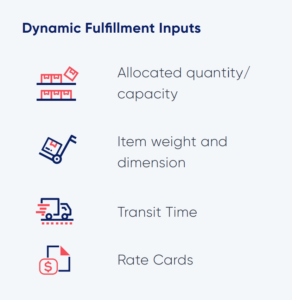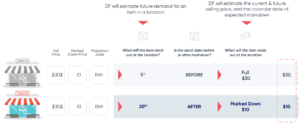Fulfill.io 101: The Cost-Based Approach and The Three Keys to Optimizing Your Total Cost-to-Serve
This is part two of our blog series, “Fulfill.io 101.” Haven’t read part one? Click here!
Welcome back to Fulfill.io 101!
Last week, we reviewed the challenges facing the retail industry and standard tech stacks in regard to expanding networks and the increasing fulfillment complexity – from proliferating fulfillment centers and rapidly shifting market conditions to built-in OMS logic designed for a different economic age.
This week we’re going to talk about how Fulfill.io achieves true fulfillment optimization through a cost-based approach that incorporates three key components for optimizing your total cost-to-serve.
Class is in session.
What Is the Cost-Based Approach?
Unlike traditional methods, Fulfill.io uses a cost-based approach, meaning that it doesn’t just apply a set of rules, one after another, until you narrow down your fulfillment choices.
Instead it looks at all the possible fulfillment options and calculates the total cost-to-serve of each option.
It examines multiple objectives and factors like shipping costs, location-specific operational behavior, and store demand, and then analyzes every permutation – in subseconds.
The Three Components of Successful Cost-Based Optimization
Let’s drill down.
What exactly is Fulfill.io looking at and evaluating as part of its calculations and optimization decisions?
#1 – Ship Cost
The first component is ship cost.
Fulfill.io considers the item itself, inventory locations, and the different carrier options.
It looks at the capacity of each location (i.e., how many units can be picked, packed, and shipped in a day), and compares this with the number of units allocated to a location to be fulfilled.
Using this comparison, it determines the utilization of that fulfillment center. How long will it take to get an item out the door? How long does it have to get to the customer?
Once it calculates this, it does your rate shopping for you and finds the lowest option that gets the package there on time so there’s no risk to customer satisfaction.
And thanks to Fulfill.io’s speed, shipping variability isn’t an issue. Its computations are fast enough that even changing shipping conditions won’t throw off its accuracy.
#2 – Labor Cost
At the same time it’s doing your rate shopping for you, Fulfill.io is also looking at labor costs, estimating the cost to pick, pack, and ship a unit for every location.
For every order, it’s considering productivity, regional financial difference, and labor constraints to help you ease the burden on over-taxed locations and optimize your available resources.
Perhaps one location can only pick 10 units an hour, while another location can pick 60, giving it a lower cost-per-pick. Factoring in labor cost means you can fulfill from a location where productivity is higher.
Looking for more details, nuances, and examples of Fulfill.io in action?
#3 – Expected Revenue Estimation
Okay, let’s pause to define our terms for a moment.
What do we mean by expected revenue?
The expected revenue is the estimated sell price of the last unit of a specific product in a given location.
Think of it in terms of opportunity cost.
When you ship an item from a location where it would sell full price instead of shipping from a location where that same item is marked down, that’s an opportunity cost.
You would much rather fulfill from the location with the higher markdown risk, rather than deplete your stock of inventory where it’s more likely to sell at full price.
So when you’re fulfilling that order, will that item be marked down? Or will it be selling full price?
The good news is that Fulfill.io already knows.
By looking at the forecast of each item in each location and examining the markdown cadence to determine the selling price of the item on the estimated stockout date, Fulfill.io assesses the risk of markdowns and selects the option that protects full-price, in-store purchases.
The Takeaways
Fulfill.io is handling swathes of information, all in real-time, and performing near-instant analyses.
Yes, it accounts for ship cost, labor cost, and expected revenue, but how does it bring all of these factors to narrow down the best possible fulfillment option?
Check out the final entry of our Fulfill.io 101 blog series for a deeper look at how the solution solves for multiple objectives and the benefits real-world companies have achieved!








